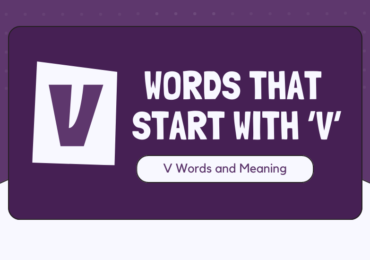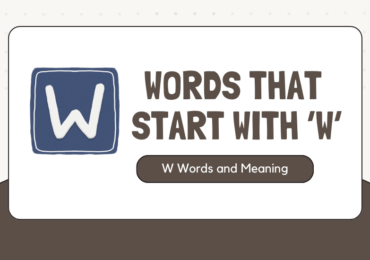The present tense is a verb tense used to describe a current activity or state of being. However, somewhat unusually, the present tense can also be used to describe past and future activities.
వర్తమాన కాలంలో జరిగే పనులు లేదా స్థితి గురించి తెలిపేందుకు Present Tense ఉపయోగిస్తాం. పని జరిగిన సంధర్భంను అనుచరించి దీన్ని తిరిగి నాలుగు tenses గా విభజించారు.
1. Simple Present Tense
The simple present tense, also known as present indefinite tense. It is used To express habits, general truths, repeated actions or unchanging situations, emotions and wishes.
నిర్దిష్ట సమయం తెలపకుండా వర్తమాన కాలంలో జరిపే సాధారణ సంభాషణలను simple present tense లో మాట్లాడాలి. రోజువారీ అలవాట్లు, నిత్య సత్యాలు, మార్పులేని సంఘటనలు, భావోద్వేగాలు, భావాలు, అభినందనలు, భవిష్యత్ ఏర్పాట్లు శాస్త్రీయ వాస్తవాలు వంటి మాటలను simple present tense లో మాట్లాడాలి.Simple present tense లో ఉపయోగించే Time words
Every day, month, week, year, always, sometimes, never, frequently, Always, As a rule, As usual, Daily, Ever, Every month, Every time, Every week, Every year, Everyday, Frequently, Generally, Hardly ever, Iften, In general, In modern days, In these days, Never, Normally, Now-a-days, Occasionally, Periodically, Rarely, Regularly, Scarcely, Seldom, Sometimes, Usually, Whenever.Simple Present Tense Structures
Positive Sentence
Simple present tense వాక్య నిర్మాణం చాల సరళంగా ఉంటుంది. ఈ మాటలలో ఒక subject + V1 ( First Form of Verb ) మరియు Object ఉంటాయి. సబ్జెక్టు, first & second person singular గా ఉన్నప్పుడు బేసిక్ V1 క్రియను ఉపయోగిస్తే సరిపోతుంది. కానీ సబ్జెక్టు third person singular ( He, She, It ) గా ఉన్నప్పుడు మాత్రం V1 క్రియకు + S / ES / IES తోకలను చేర్చాల్సి ఉంటుంది.| Positive Forms (+) | Subject ( I, You, We, They ) + V1 ( First Form of Verb ) + Object |
| Subject ( He, She, It ) + VERB – S / ES / IES + Object |
Examples :
|
|
Negitive Sentence
Simple tense లో నెగిటివ్ వాక్యం చెప్పాల్సి వచ్చినప్పుడు, V1 కు ముందు "do not " చేర్చాల్సి ఉంటుంది. ఉదాహరణకు "నాకు ఐస్ క్రీమ్ అంటే ఇష్టం" అనేది పాజిటివ్ వాక్యమైతే, దానికి "లేదు" మాట చేర్చడం ద్వారా అది నెగిటివ్ సెంటెన్స్ అవుతుంది. ఈ "లేదు" అనే పదానికి బదులు ఇంగ్లీషులో "do not" పదాన్ని ఉపయోగించాలి. ex: i don't like (V1) ice cream. కానీ సబ్జెక్టు third person singular ( He, She, It ) గా ఉన్నప్పుడు do not బదులు does not ఉపయోగించాలి.| Negitive Forms (-) | Subject ( I, You, We, They ) + do not / don’t + V1 ( First Form of Verb ) + Object |
| Subject ( He, She, It ) + does not / doesn’t + V1 ( First Form of Verb ) + Object |
Examples :
|
|
Question Sentence
Simple present tense లో ప్రశ్నలు సంధించేటప్పుడు, జనరల్ simple present tense వాక్య నిర్మాణాన్ని పాటిస్తూ.. సబ్జెక్టు (కర్తకు) ముందు do/does సహాయక క్రియలను చేర్చాల్సి ఉంటుంది. సబ్జెక్టు first & second person singular గా ఉన్నప్పుడు "do" సహాయక క్రియను, సబ్జెక్టు third person singular ( He, She, It ) గా ఉన్నప్పుడు "does" సహాయక క్రియను ఉపయోగించాలి.| Question Forms (?) | Do + Subject ( I, You, We, They ) + V1 ( First Form of Verb ) + Object |
| Does + Subject ( He, She, It ) + V1 ( First Form of Verb ) + Object |
Examples :
|
|
Short Answer Sentence
Simple present tense లో ప్రశ్నలు సంధించేటప్పుడు.వాటికీ సంబంధించిన జవాబుల వాక్య నిర్మాణం ఇప్పుడు చూద్దాం. ఈ ప్రశ్నలకు తిరిగి ఇచ్చే జవాబుల్లో simple present negitive sentence వాక్య నిర్మాణం ఉపయోగిస్తూ, సబ్జెక్టు ముందు "Yes / No" మాటలను ఉపయోగించాలి. ప్రశ్నకు పాజిటివ్ సమాధానం చెప్పాల్సి వస్తే సబ్జెక్టు ముందు "Yes" అని, V1 ముందు "Do" నీ ఉపయోగించాలి. అదే నెగిటివ్ సమాధానం చెప్పాల్సి వస్తే సబ్జెక్టు ముందు "No" అని, V1 ముందు "Do not" నీ ఉపయోగించాలి. ఈ నియమం does / does not విషయంలో కూడా వర్తిస్తుంది.| Short Answer Forms (-/+) | YES / NO + Subject ( I, You, We, They )+ do / do not (don’t) + Object |
| YES / NO + Subject ( He, She, It ) + does / does not (doesn’t) + Object |
Examples :
|
|
2. Present Continuous Tense
The present continuous tense is used to talk about things that are happening at the moment of speaking.
Continuous అంటే జరుగుతున్న అనే అర్ధం వస్తుంది. దీన్ని present progressive tense అనికూడా అంటారు. మనం మాట్లాడే సందర్భంలో జరుగుతున్న పనుల గురించి సంభాషించేందుకు present continuous tense అంటారు. present continuous tense వాక్య నిర్మాణంలో సబ్జెక్టు + సహాయక క్రియ + ప్రధాన క్రియ V1 + ing (present participle (-ing) + ఆబ్జెక్ట్ ఉంటాయి.Present continuous tense లో ఉపయోగించే Time Words : Now, right now, at this moment.
Present Continuous Tense Structures
Positive Sentence
Present continuous tense వాక్య నిర్మాణంలో సబ్జెక్టు + సహాయక క్రియ + ప్రధాన క్రియ V1 + ing (present participle (-ing) + ఆబ్జెక్ట్ ఉంటాయి. సబ్జెక్టు, first & third person singular గా ఉన్నప్పుడు V1 + ing క్రియకు ముందు am / is సహాయక క్రియ ఉపయోగించాలి. secound మరియు third person plural ( you, we, they ) గా ఉన్నప్పుడు "are" సహాయక క్రియ ఉపయోగించాలి.| Positive Forms (+) | Subject ( I, he, she ) + Am / Is + V1 + ing ( Present participle (-ing) + Object |
| Subject ( you, we, they ) + Are + V1 + ing ( Present participle (-ing) + Object |
Examples :
|
|
Negitive Sentence
Present continuous tense లో Negitive వాక్యం నిర్మించేటప్పుడు, సహాయక క్రియకు మరియు ప్రధాన క్రియ V1 + ing (present participle (-ing) కు మధ్య "Not" ఉపయోగించాలి.| Negitive Forms (-) | Subject ( I, he, she ) + Am / Is + Not + V1 + ing ( Present participle (-ing) + Object |
| Subject ( you, we, they ) + Are + Not + V1 + ing ( Present participle (-ing) + Object |
Examples :
|
|
Question Sentence
Present continuous tense లో ప్రశ్నలు సంధించడం చాల సులువైన పని. Present continuous tense వాక్య నిర్మాణంలో ఉండే సబ్జెక్టును సహాయక క్రియ స్థానంలో, సహాయక క్రియ స్థానంలో సబ్జెక్టును పెట్టడం ద్వారా Present continuous question sentence ఏర్పడుతుంది. ఉదాహరణకు She is singing a song ప్రశ్న వాక్యంగా మార్పుచేస్తే is she singing song ? మారుతుంది.| Question Forms (?) | Am / Is + Subject ( I, he, she ) + V1 + ing ( Present participle (-ing) + Object |
| Are + Subject ( you, we, they ) + V1 + ing ( Present participle (-ing) + Object |
Examples :
|
|
Short Answer Sentence
Present continuous tense లో ప్రశ్నలు సంధించేటప్పుడు.వాటికీ సంబంధించిన జవాబుల వాక్య నిర్మాణం ఇప్పుడు చూద్దాం. ఈ ప్రశ్నలకు తిరిగి ఇచ్చే జవాబుల్లో సబ్జెక్టు ముందు "Yes / No" మాటలను ఉపయోగించాలి. ప్రశ్నకు పాజిటివ్ సమాధానం చెప్పాల్సి వస్తే సబ్జెక్టు ముందు "Yes" అనే మాట చేర్చితే సరిపోతుంది. మిగతా వాక్యంలో ఎటువంటి మార్పు చేయాల్సిన అవసరం లేదు. అదే నెగిటివ్ సమాధానం చెప్పాల్సి వస్తే సబ్జెక్టు ముందు "No" అని చేర్చుతూ, V1 + ing ( Present participle (-ing) ముందు "Not" నీ ఉపయోగించాలి.| Short Answer Forms (-/+) | YES / NO + Subject ( I, he, she ) + Am / Is + - / Not + V1 + ing ( Present participle (-ing) + Object |
| YES / NO + Subject ( you, we, they ) + Are + - / Not + V1 + ing ( Present participle (-ing) + Object |
Examples :
|
|
3. Present Perfect Tense
The present perfect tense refers to an action or state that either occurred at an indefinite time in the past (e.g., we have talked before) or began in the past and continued to the present time (e.g., he has grown impatient over the last hour). This tense is formed by have/has + the past participle.
వర్తమాన కాలంలో తాజాగా పూర్తియైన (Recent Past actions) లేదా గతంలో ప్రారంభమయి, ఇప్పటికి కొనసాగుతున్న ఆక్టివిటీ లేదా స్థితి గురించి తెలిపేందుకు present perfect tense ఉపయోగిస్తాం. present perfect tense వాక్య నిర్మాణం ఈ విధంగా ఉంటుంది. సబ్జెక్టు + Has/Have + V3 (past participle) + ఆబ్జెక్ట్. Present Tense వాక్యాలలో Present Perfect Tense లో మినహా ఇంకే వాక్యంలో V3 (past participle) క్రియను ఉపయోగించం.Present Perfect Tense లో ఉపయోగించే Time Words : For, since, yet, never, always, so far, many times, lately, recently, already
Present Perfect Tense Structures
Positive Sentence
Present Perfect Tense వాక్య నిర్మాణంలో సబ్జెక్టు + Has/Have + ప్రధాన క్రియ V3 (past participle) + ఆబ్జెక్ట్ ఉంటాయి. సబ్జెక్టులో I, You, We, They ఉన్నప్పుడు Have + V3 (past participle) ఫార్మేట్ ఉపయోగించాలి. అదే సబ్జెక్టులో He, She, It ఉంటె Has + V3 (past participle) ఫార్మేట్ ఉపయోగించాలి.| Positive Forms (+) | Subject ( I, You, We, They ) + Have + V3 ( past participle ) + Object |
| Subject ( He, She, It ) + Has + V3 (past participle) + Object |
Examples :
|
|
Negitive Sentence
Present Perfect Tense లో Negitive వాక్యం నిర్మించేటప్పుడు, Have / Has సహక క్రియలకు తర్వాత "Not" ఉపయోగిస్తే ఆ వాక్యం నెగిటివ్ వాక్యంగా మారిపోతుంది.| Negitive Forms (-) | Subject ( I, You, We, They ) + Have + Not + V3 ( past participle ) + Object |
| Subject ( He, She, It ) + Has + Not + V3 (past participle) + Object |
Examples :
|
|
Question Sentence
Present Perfect Tense లో Question వాక్యం నిర్మించేటప్పుడు, Have / Has సహక క్రియలను సబ్జెక్టు ముందు ఉంచితే.. ఆ వాక్యం Present Perfect Tense ప్రశ్న వాక్యంగా మారిపోతుంది.| Question Forms (?) | Have + Subject ( I, You, We, They ) + V3 ( past participle ) + Object |
| Has + Subject ( He, She, It ) + V3 (past participle) + Object |
Examples :
|
|
Short Answer Sentence
Present Perfect Tense లో ప్రశ్నలు సంధించేటప్పుడు.వాటికీ సంబంధించిన జవాబుల వాక్య నిర్మాణం ఇప్పుడు చూద్దాం. ఈ ప్రశ్నలకు తిరిగి ఇచ్చే జవాబుల్లో సబ్జెక్టు ముందు "Yes / No" మాటలను ఉపయోగించాలి. ప్రశ్నకు పాజిటివ్ సమాధానం చెప్పాల్సి వస్తే సబ్జెక్టు ముందు "Yes" అనే మాట చేర్చితే సరిపోతుంది. మిగతా వాక్యంలో ఎటువంటి మార్పు చేయాల్సిన అవసరం లేదు. అదే నెగిటివ్ సమాధానం చెప్పాల్సి వస్తే సబ్జెక్టు ముందు "No" అని చేర్చుతూ, Have / Has తర్వాత "Not" నీ ఉపయోగించాలి.| Short Answer Forms (-/+) | YES + Subject + Have / Has + V3 ( past participle ) + Object |
| NO + Subject + Have / Has + Not + V3 (past participle) + Object |
Examples :
|
|
4. Present Perfect Continuous Tense
The present perfect continuous tense (also known as the present perfect progressive tense) shows that something started in the past and is continuing at the present time. The present perfect continuous is formed using the construction has/have been + the present participle (root + -ing)
గతంలో ప్రారంభమయి, ఇప్పటికి కొనసాగుతున్న ఆక్టివిటీ లేదా స్థితి గురించి తెలిపేందుకు present perfect continuous tense ఉపయోగిస్తాం. present perfect continuous tense వాక్య నిర్మాణం ఈ విధంగా ఉంటుంది. సబ్జెక్టు + Has been/Have been + V1 + Ing (Present participle + ing) + ఆబ్జెక్ట్.Present perfect continuous tense లో ఉపయోగించే Time Words : For, since, lately, recently.
Present perfect continuous tense Structures
Positive Sentence
Present perfect continuous tense వాక్య నిర్మాణంలో సబ్జెక్టు + Has Been/Have Been + ప్రధాన క్రియ V1 (present participle + ing) + ఆబ్జెక్ట్ ఉంటాయి. సబ్జెక్టులో I, You, We, They ఉన్నప్పుడు Have been + V1 + Ing (present participle + ing) ఫార్మేట్ ఉపయోగించాలి. అదే సబ్జెక్టులో He, She, It ఉంటె Has been+ V1 + ing (V1 (present participle + ing)) ఫార్మేట్ ఉపయోగించాలి.| Positive Forms (+) | Subject ( I, You, We, They ) + Have + Been + V1 + Ing ( present participle + Ing ) + Object |
| Subject ( He, She, It ) + Has + Been + V1 + Ing (present participle + Ing) + Object |
Examples :
|
|
Negitive Sentence
Present perfect continuous tense లో Negitive వాక్యం నిర్మించేటప్పుడు, Have / Has సహక క్రియలకు తర్వాత "Not" చేర్చి తర్వాత Been ఉపయోగించడం ద్వారా ఆ వాక్యం నెగిటివ్ వాక్యంగా మారిపోతుంది.| Negitive Forms (-) | Subject ( I, You, We, They ) + Have + Not + Been + V1 ( present participle + Ing ) + Object |
| Subject ( He, She, It ) + Has + Not + Been + V1 (present participle + Ing) + Object |
Examples :
|
|
Question Sentence
Present perfect continuous tense లో Question వాక్యం నిర్మించేటప్పుడు, Have / Has సహక క్రియలను సబ్జెక్టు ముందు ఉంచుతూ.. సబ్జెక్టు తర్వాత Been చేర్చడం ద్వారా ఆ వాక్యం Present perfect continuous tense ప్రశ్న వాక్యంగా మారిపోతుంది.| Question Forms (?) | Have + Subject ( I, You, We, They ) + Been + V1 + Ing ( present participle ) + Object |
| Has + Subject ( He, She, It ) + Been + V1 + Ing (present participle) + Object |
Examples :
|
|
Short Answer Sentence
Present perfect continuous tense లో ప్రశ్నలు సంధించేటప్పుడు.వాటికీ సంబంధించిన జవాబుల వాక్య నిర్మాణం ఇప్పుడు చూద్దాం. ఈ ప్రశ్నలకు తిరిగి ఇచ్చే జవాబుల్లో సబ్జెక్టు ముందు "Yes / No" మాటలను ఉపయోగించాలి. ప్రశ్నకు పాజిటివ్ సమాధానం చెప్పాల్సి వస్తే సబ్జెక్టు ముందు "Yes" అనే మాట చేర్చితే సరిపోతుంది. మిగతా వాక్యంలో ఎటువంటి మార్పు చేయాల్సిన అవసరం లేదు. అదే నెగిటివ్ సమాధానం చెప్పాల్సి వస్తే సబ్జెక్టు ముందు "No" అని చేర్చుతూ, Have / Has తర్వాత "Not" నీ చేర్చి, Been ఉపయోగించాల్సి ఉంటుంది.| Short Answer Forms (-/+) | YES + Subject + Have Been / Has Been + V1 + Ing ( present participle ) + Object |
| NO + Subject + Have / Has + Not + Been + V1 + Ing (present participle) + Object |
Examples :
|
|










English pdf kavali